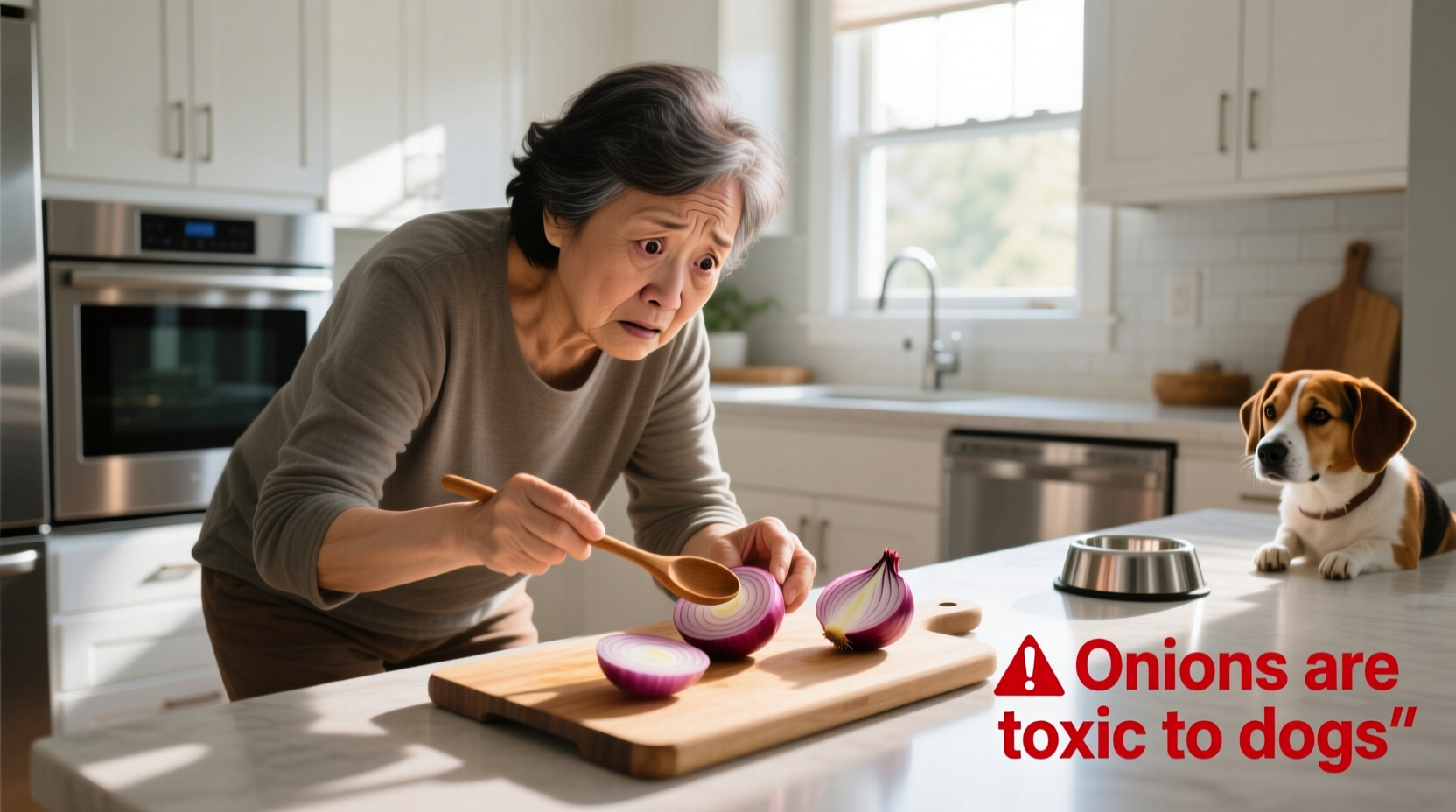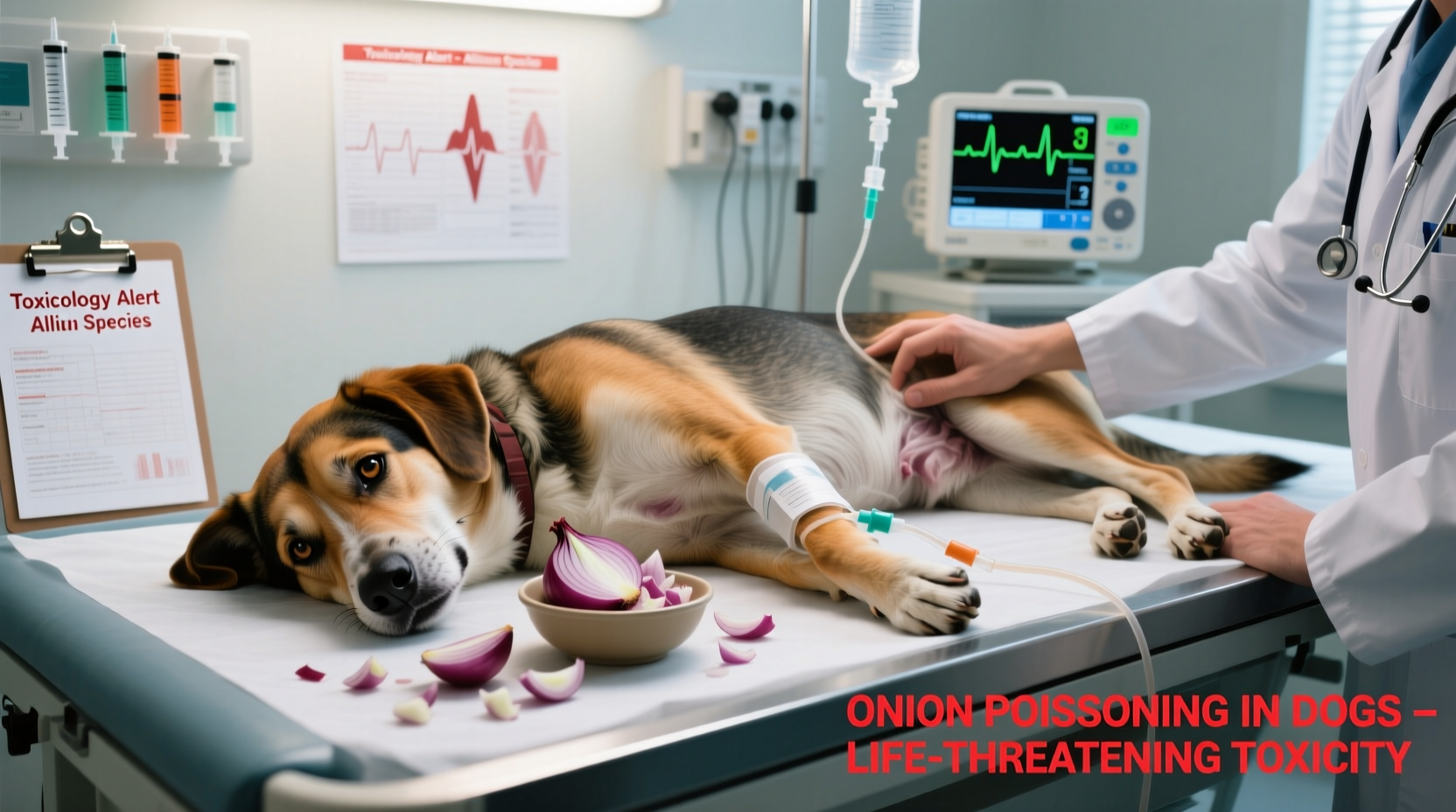Immediate Answer: Onions are toxic to dogs in all forms—raw, cooked, powdered, or in processed foods. Even small amounts can cause hemolytic anemia by damaging red blood cells. If your dog consumed onions, contact your veterinarian immediately. Symptoms may not appear for 24-72 hours but can be life-threatening.
Understanding Onion Toxicity in Dogs: What Every Pet Owner Must Know
When your dog accidentally eats something dangerous, every minute counts. Onion poisoning ranks among the most common yet preventable food-related emergencies in dogs. Unlike humans, dogs lack the enzyme needed to process N-propyl disulfide, the toxic compound in onions and other Allium vegetables. This triggers oxidative damage to red blood cells, potentially causing life-threatening hemolytic anemia.
Why Onions Are Dangerous for Dogs: The Science Explained
Onions contain N-propyl disulfide, which oxidizes hemoglobin in your dog's red blood cells. This creates Heinz bodies—abnormal structures that make red blood cells fragile and prone to rupture. As more cells break down, your dog develops hemolytic anemia, reducing oxygen delivery throughout their body.
The entire Allium family poses risks, but toxicity levels vary significantly:
| Allium Type | Toxicity Level | Dangerous Amount (per 20 lbs) |
|---|---|---|
| Onion (raw) | High | 5g or more |
| Garlic | Very High | 1-2 cloves |
| Leeks | Moderate | 10g or more |
| Chives | High | Small bunch |
Source: American Veterinary Medical Association (AVMA) - Onion and Garlic Poisoning in Dogs
Symptom Timeline: What to Watch For in the Critical First 72 Hours
Many dog owners miss early warning signs because symptoms develop gradually. Recognizing the progression timeline could save your dog's life:
- 0-24 hours: Vomiting, diarrhea, abdominal pain, drooling (often mistaken for simple stomach upset)
- 24-48 hours: Pale gums, weakness, rapid breathing, elevated heart rate
- 48-72 hours: Dark urine (resembling cola), jaundice (yellow gums/eyes), collapse
According to the ASPCA Animal Poison Control Center, 73% of onion poisoning cases show symptoms within 48 hours, but some dogs develop complications up to 5 days post-ingestion.

Immediate Action Plan: What to Do If Your Dog Ate Onions
Time is critical when addressing potential onion poisoning in dogs. Follow these vet-recommended steps:
- Document everything: Note the time of ingestion, estimated amount, and form (raw, cooked, powder)
- Contact emergency veterinary care immediately - don't wait for symptoms
- Do NOT induce vomiting unless specifically instructed by a vet
- Bring packaging or food remnants to help your vet determine toxin concentration
Veterinarians typically administer activated charcoal to absorb toxins and provide supportive care including IV fluids. In severe cases, blood transfusions may be necessary. The Merck Veterinary Manual confirms that prompt treatment significantly improves recovery outcomes.
Prevention Strategies: Keeping Your Kitchen Safe for Dogs
Most onion poisoning occurs accidentally through seemingly harmless foods. Protect your dog with these practical measures:
- Store onions securely: Keep all Allium vegetables in closed cabinets away from countertops
- Check processed foods: Many baby foods, soups, and meat seasonings contain onion powder
- Train family members: Teach children that "people food" isn't safe for dogs
- Use dog-safe alternatives: Replace onions with dog-friendly vegetables like carrots or green beans
Remember that cooking doesn't eliminate toxicity—boiled, fried, or dehydrated onions remain dangerous. Even small amounts in gravies or broths can accumulate to toxic levels over time.
Common Misconceptions About Onion Toxicity in Dogs
Several dangerous myths persist about dogs and onions:
- Myth: "Cooking destroys the toxic compounds"
Fact: Heat doesn't neutralize N-propyl disulfide; cooked onions remain toxic - Myth: "Only large amounts are dangerous"
Fact: As little as 0.5% of a dog's body weight in onions can cause poisoning - Myth: "Garlic is safe in small doses"
Fact: Garlic is actually more toxic than onions by weight
The Veterinary Partner emphasizes that no amount of onion is considered safe for dogs, and repeated small exposures can cause cumulative damage.
When to Seek Emergency Care: Critical Warning Signs
Don't wait if you notice these emergency symptoms:
- Difficulty breathing or rapid panting
- Dark brown or reddish urine
- Complete lethargy or collapse
- Refusal to eat or drink for more than 12 hours
These indicate advanced hemolytic anemia requiring immediate blood work and possible transfusion. The American College of Veterinary Internal Medicine reports that dogs showing these symptoms have a 40% higher complication rate without prompt intervention.











 浙公网安备
33010002000092号
浙公网安备
33010002000092号 浙B2-20120091-4
浙B2-20120091-4